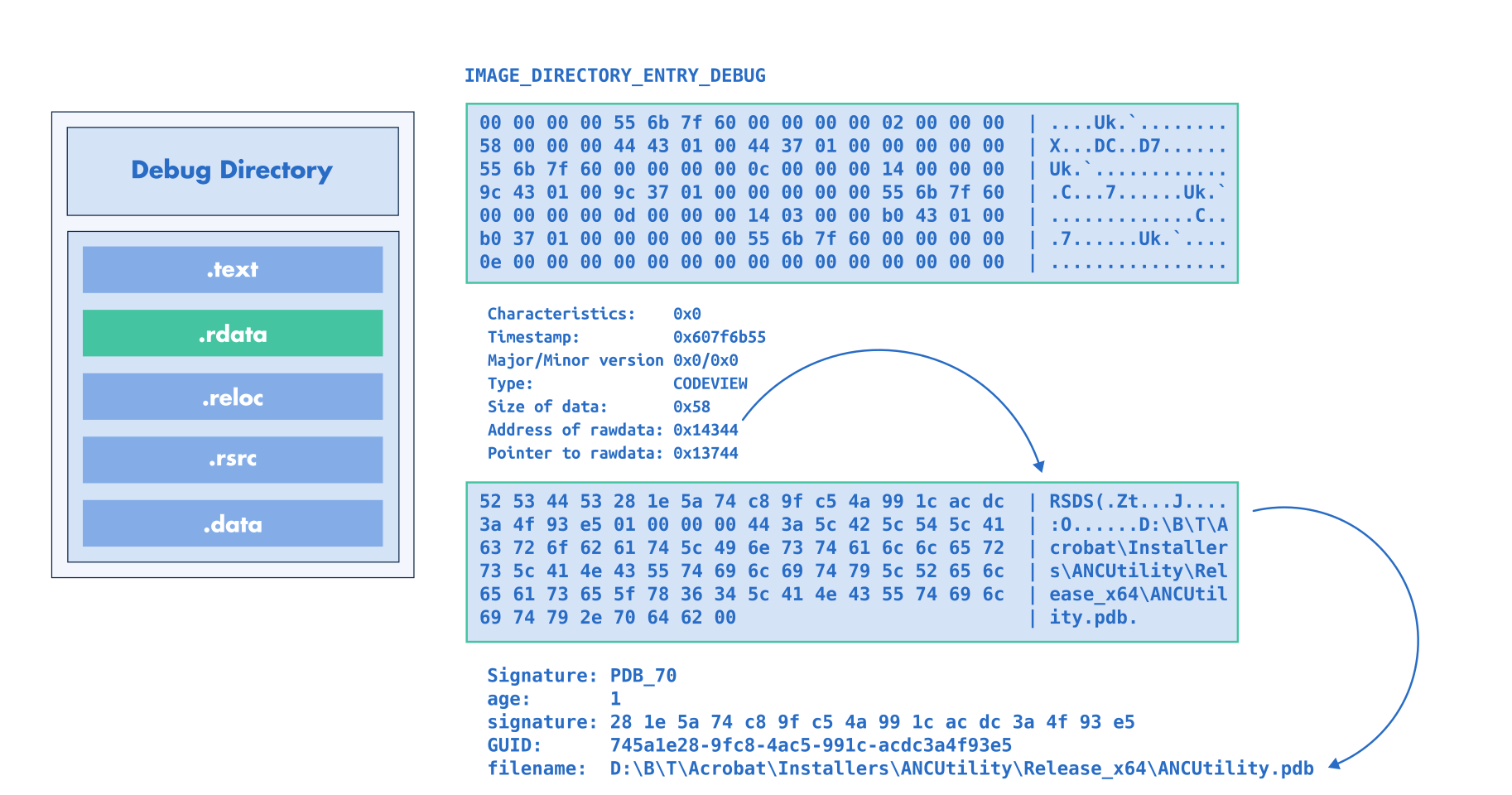Exports Modification¶

LIEF provides extensive support for modifying the PE’s export table giving you the ability to add, remove, or modify export entries or to create the entire export table in a PE Binary.
Creating Export Entries¶
This could be used for code lifting or fuzzing.
import lief
pe: lief.PE.Binary = ...
exp: lief.PE.Export = pe.get_export()
# Remove an entry
exp.remove_entry("my_exported_name")
# Add a new export
exp.add_entry("fuzz_me", 0x10010)
config = lief.PE.Builder.config_t()
config.exports = True
config.export_section = ".myedata" # optional
pe.write("out.dll", config)
#include <LIEF/PE.hpp>
std::unique_ptr<LIEF::PE::Binary> pe;
LIEF::PE::Export* exp = pe->get_export();
// Remove an entry
exp->remove_entry("my_exported_name");
// Add a new export
exp->add_entry("fuzz_me", 0x10010);
LIEF::PE::Builder::config_t config();
config.exports = true;
config.export_section = ".myedata";
pe->write("out.dll", config);
let mut pe: lief::pe::Binary;
let mut exp: lief::pe::Export = pe.export().unwrap();
// Remove an entry
exp.remove_entry_by_name("my_exported_name");
// Add a new export
exp.add_entry_by_name("fuzz_me", 0x10010);
let mut config = lief::pe::builder::Config::default();
config.exports = true;
config.export_section = true;
pe.write_with_config("out.dll", config);
Creating an Export Table¶
This section introduces the API for creating an export table. We’ll explore a scenario where we want to convert a PE executable into a DLL.
Note
The process of converting an executable to a library is also detailed for ELF binary in the tutorial: 08 - Transforming an ELF executable into a library.
First, we need to update PE headers to ensure they are compliant with the DLL format:
import lief
pe: lief.PE.Binary = ...
pe.header.add_characteristic(lief.PE.Header.CHARACTERISTICS.DLL)
pe.optional_header.addressof_entrypoint = 0
#include <LIEF/PE.hpp>
std::unique_ptr<LIEF::PE::Binary> pe;
pe->header().add_characteristic(LIEF::PE::Header::CHARACTERISTICS::DLL);
pe->optional_header().addressof_entrypoint(0);
let mut pe: lief::pe::Binary;
pe.header().add_characteristic(lief::pe::headers::Characteristics::DLL);
pe.optional_header().set_addressof_entrypoint(0);
Then, we can start creating and filling a new Export Table:
exp = lief.PE.Export("lib_exe2dll.dll", [
lief.PE.ExportEntry("cbk1", 0x0001000),
lief.PE.ExportEntry("cbk2", 0x0001010),
])
pe.set_export(exp)
config = lief.PE.Builder.config_t()
config.exports = True
pe.write("lib_exe2dll.dll")
LIEF::PE::Export exp("lib_exe2dll.dll",
{
LIEF::PE::ExportEntry("cbk1", 0x0001000),
LIEF::PE::ExportEntry("cbk2", 0x0001010),
}
);
pe->set_export(exp)
LIEF::PE::Builder::config_t config();
config.exports = true;
pe->write("lib_exe2dll.dll", config);
let mut exp = lief::pe::Export::new();
exp.set_name("lib_exe2dll.dll");
exp.add_entry_by_name("cbk1", 0x0001000);
exp.add_entry_by_name("cbk2", 0x0001010);
pe.set_export(&exp);
pe.write_with_config("lib_exe2dll.dll", config);
Limitations
This binary-to-library example assumes that the original executable has been compiled to be position-independent which means that it contains relocations.
Within a Python environment, we can check that lib_exe2dll.dll can be
loaded as a DLL and that we can call cbk1 and cbk2:
import ctypes
lib = ctypes.windll.LoadLibrary("lib_exe2dll.dll")
assert lib.cbk1() >= 0
assert lib.cbk2() >= 0